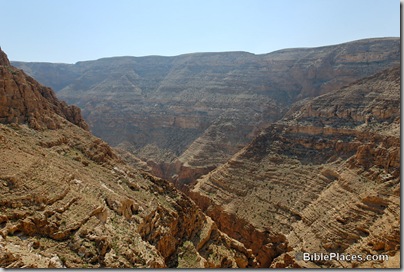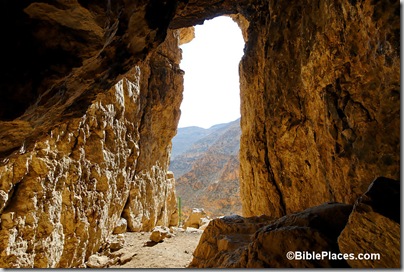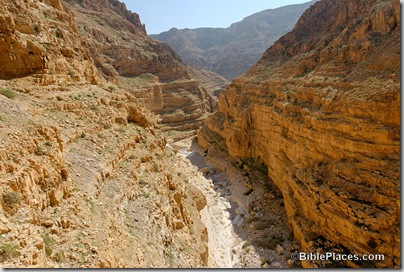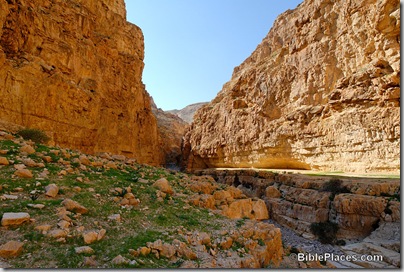One of my favorite hikes in Israel is described in a recent story in the Jerusalem Post. The Nahal Darga is a large canyon that drains the Judean Wilderness into the Dead Sea. The marvelous hike combines spectacular views, historic caves, and challenging climbing. Jacob Solomon’s article offers sage advice, but if you’re planning to heed the call, do not make the same mistake that he does and miss the real jewel of the hike, that is, climbing down the canyon itself! Some excerpts from the article:
This is a memorable, varied and demanding full-day route. Shaded for much of the way, the earlier parts follow the deep, steep-sided gorge of Nahal Darga, and the sun should be well behind the Judean Hills by the late afternoon descent to the finish at Mitzpe Shalem. Check the flash-flood forecast immediately before this excursion….
You have reached one of the last stands of the Second Jewish Revolt against Rome (132-135 CE), led by Simeon Bar Kosiba, a.k.a. Bar Kochba. The official Roman conversion of Jerusalem to the pagan city of Aelia Capitolina with a temple to the god Jupiter fired a rebellion of sufficient magnitude for Emperor Hadrian to bring down his premier general Severus, then in Britain. The fighters retreated, making their last guerrilla-style stands in these mountains in the hopeful but erroneous belief that the geographical obstacles you have just surmounted might deter Hadrian’s imperial army.
If you do opt to climb through the canyon, you must be in good shape, you may need climbing rope, and you will get wet and probably dirty. You also would be wise to leave anything behind that cannot get wet, including your camera.

 Wadi Murabaat = Nahal Darga, Cave where Bar Kochba scrolls found
Wadi Murabaat = Nahal Darga, Cave where Bar Kochba scrolls found
